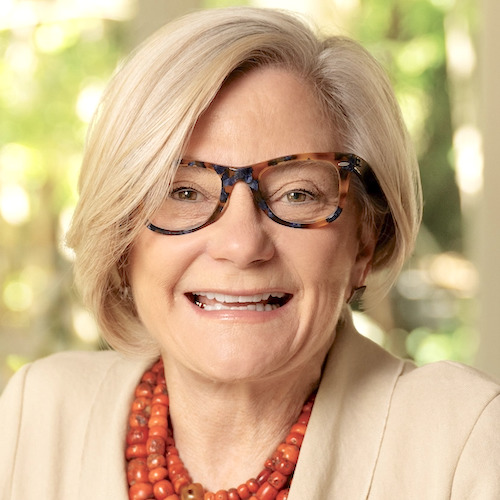
There are approximately 28,900 residential care and assisted living communities in the United States, according to the Centers for Disease Control and Prevention. The majority are well-established, contributing greatly to the country’s socioeconomic fabric. Despite importance of assisted living, however, it can be difficult for providers to find affordable financing to expand or improve services.
Fortunately, the SBA 504 loan program provides an affordable way to obtain funding for purchasing, constructing or refinancing an assisted living community. The SBA 504 loan program significantly reduces the amount assisted living communities have to pay for a down payment and provides a long-term, below-market fixed interest rate.
Here is a basic breakdown of why SBA 504 loans work well for assisted living, how these loans work and how business owners can use them.
Benefits of SBA 504 loans
With an SBA 504 loan, a business owner is able to buy, renovate, construct or refinance commercial real estate with only a 10% down payment. Due to the low down payment of the loan, businesses can retain valuable working capital so that they can continue to grow. A down payment of just 10% of the total project cost can be made to finance renovations, equipment, closing costs and soft costs.
SBA 504 loans are designed to solve important challenges. Recent census data indicates that there are around 76.4 million baby boomers in the United States. The generation typically is defined to include people born in 1946 through 1964, which means there are around 76.4 million people who either are 76 or will reach that age at some point over the next two decades.
To maintain quality of life as they age, some of those valuable members of society will require assisted living arrangements at some point. With the SBA 504 loan program, business owners have access to funds to help them expand and improve facilities that aid in caring for the nation’s aging population.
The SBA 504 loan process streamlines funding and reduces the risk for lenders as well as assisted living community owners.
SBA 504 loans: How they work
SBA 504 loans are designed to mitigate the risk associated with lending without limiting the amount of capital borrowers gain access to. Here is how that’s done:
The loan consists of two mortgages. The first mortgage is provided by a conventional lender, representing approximately 50% of the total project cost. The SBA 504 second mortgage, representing generally 40% of the total project cost, has a long-term (up to 25 years) and fixed interest rate, fully amortized for the full term of the loan. The rest of the funds come from the borrower as a down payment, meaning that it is possible to borrow as much as 90% of the money needed, paying the remaining 10% out of pocket.
Monthly payments are fixed for the life of the loan, providing small business owners with affordable payments that enable them to control overhead costs for the long term. The interest rate is always below-market.
By distributing the sources of funds between conventional lenders, the SBA and the small business owner, the risk each party assumes is significantly reduced. The borrower receives the funding needed to grow the business.
The low down-payment of the SBA 504 loan, typically 10%, enables borrowers to retain their working capital. Financing an assisted living community conventionally could require a down payment of 30% or more. The 25-year fixed rate, however, gives business owners peace of mind knowing that their monthly payments are fixed for the life of the loan, providing them with affordable payments that enable them to control overhead costs for the long term.
When considering the financing for assisted living communities, the attributes of the SBA 504 loan make them an ideal fit for business owners looking to own their property or expand their businesses.
How assisted living can use SBA 504 loans
To either build or improve an assisted living community, the maximum portion from the SBA is $5 million, or $5.5 million if there is a goal of implementing green efficiencies. There is no limit to the total project cost, however.
New construction
For an assisted living community, an SBA loan can be used to:
- Purchase land for both the building itself and recreational areas surrounding the structure.
- Pay for materials and labor in connection with the project.
- Pay for equipment with a service life of 10 or more years that will be used on a long-term basis, which may include:
- Bed lifts
- Elevators
- Emergency defibrillators.
- Pay for essential assisted infrastructural elements, such as:
- Wheelchairs
- Patient call systems
- Specialized HVAC systems designed to optimize aging residents’ comfort.
Renovations and remodels
When renovating or remodeling an existing assisted living community, an SBA 504 loan can cover virtually all facets of the project, including common items, such as:
- Adding an additional wing.
- Adding or expanding medical services to reduce the frequency with which residents have to go to the hospital
- Adding more equipment to accommodate a growing resident population.
- Remodeling rooms to make them more accessible for residents with extremely limited mobility as well as the staff members needed to support them.
- Expanding food service and prep areas to make room for more residents.
- Expanding or diversifying the kinds of recreation that is offered to residents.
- Building a rehab facility connected to an existing building or on a current campus.
How to boost funding for assisted living
For communities that qualify for the SBA’s Go Green program, the SBA’s maximum contribution increases from $5 million to $5.5 million per project. When business owners ‘Go Green’ they can receive as much as $16.5 million spread out over several projects.
To qualify, business owners must demonstrate that they have reduced the energy use of their building by 10%, buy a new building that will use 10% less energy, or replace 10% of the energy the community currently uses with renewable energy, such as solar, wind or geothermal power.
Who is eligible to apply for SBA 504 Loans?
Many types of companies qualify for the 504 program. It is especially attractive to owners of special-use properties, such as wineries, hotels or gas stations, however, because conventional lenders are reluctant to finance those unique properties and often require a down payment of 40% or more. The SBA 504 structure is attractive to conventional lenders since their loan represents only 50% of the total project.
Most assisted living communities qualify for the SBA 504 program. They must operate for profit in the United States or one of its territories. Assisted living owners in Arizona, California or Nevada, contact TMC Financing to see whether you are eligible.
Barbara Morrison, a California business and civic leader, is the founder and president of TMC Financing, a certified development company that provides SBA commercial real estate financing. A former mayor and city council member for the city of Belvedere, CA, Morrison advocates for women and small business owners and has provided leadership for many community organizations.
Have a column idea? See our submission guidelines here.
The opinions expressed in each McKnight’s Senior Living marketplace column are those of the author and are not necessarily those of McKnight’s Senior Living.




